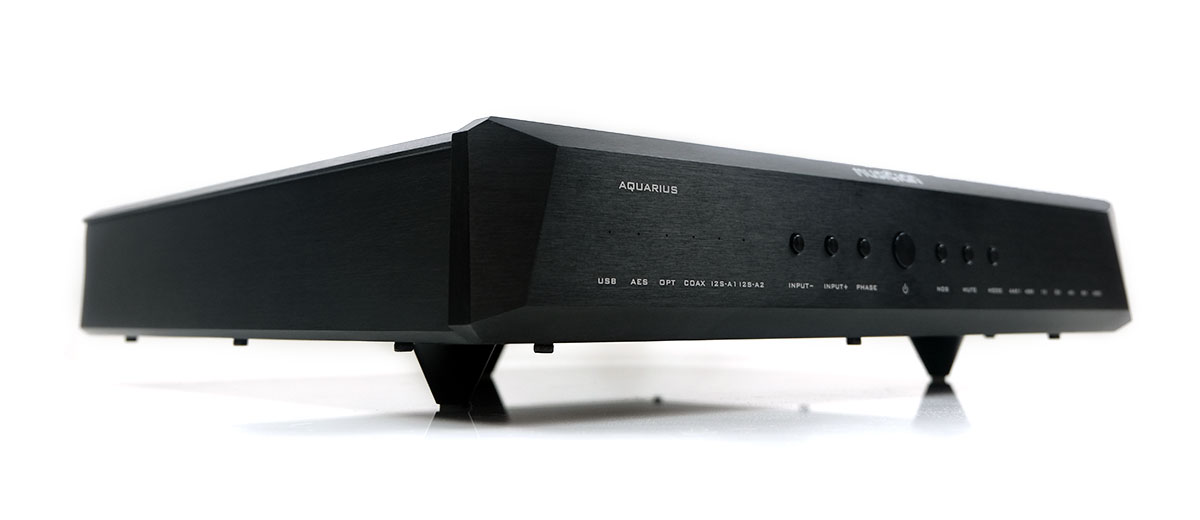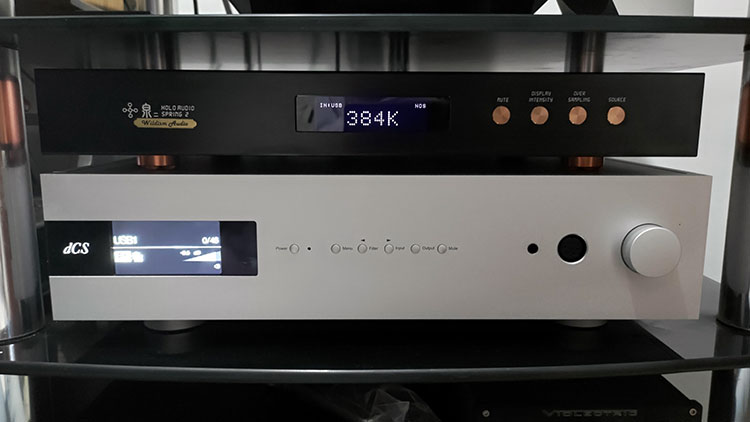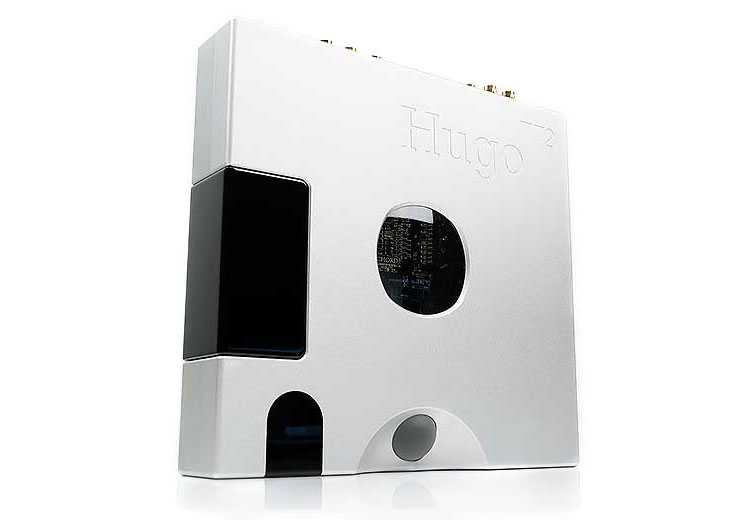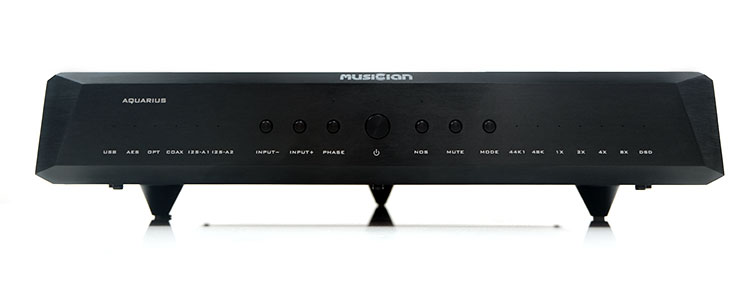Select Comparisons
All impressions were completed with an Auris Audio HA-2SF amplifier, using the Final D8000 Pro and the Audeze LCD-5 headphones.
Musician Audio Pegasus
$1099
The Pegasus was the company’s debut R-2R DAC launched in 2020 and reviewed by us in early 2021. It also picked up our DAC Top Gear Award for 2021.
Technical
On paper, the technical thrust of each DAC is very similar. Both use R-2R topologies with separate ladder rails for PCM and DSD and both use Musician Audio’s proprietary coded STMicroelectronics ARM Cortex-M4-based STM32F446 processor for a very high threshold of 32BIT/1536kHz and DSD1024 decoding capability.
The differences are more devil in the detail but they are still significant, nevertheless. For example, the Pegasus uses a dual 24BIT ladder network implementation of resistors matched to within 0.01% for precision resistance.
The Aquarius has double the resistor count with four 24BIT ladder networks consisting of hand-picked resistors to within a much tighter 0.005% precision resistance for a much smaller linear error rate for decoding.
Both DAC’s digital bridges are controlled by an Altera Cyclone IV though the precise nature of the crystal oscillators seems to have changed from the Pegasus FEMTO Crystal oscillation design to dual constant temperature versions in the Aquarius. This should improve frequency stability through additional protection from ambient temperature changes.
Noise and distortion performance is much better on the Aquarius with an SNR of around 5dB lower when going balanced (-128db compared to -123dB) and a THD+N of 0.001% compared to 0.002%.
There is a slight difference in the analog output ratings with the Aquarius at 3.59V for balanced XLR and 1.79V for SE and the Pegasus at SE 2.2Vrms and its balanced XLR output rated at 3.55Vrms.
As mentioned before, I always felt the Pegasus rated output was inaccurate in reality given the high impedance output rating. In our real-world testing, this proved to be the case with the Aquarius sounding much more dynamic at similar volume levels.
Design
Almost but not quite a miniature doppelganger, the Pegasus design language certainly laid the groundwork for the Aquarius aesthetics and form factor. Simply add substantially more weight and make everything bigger and presto, at least on the outside, you have a flagship version.
Of course, it is not that simple but if you are thinking of upgrading from the Pegasus, the Aquarius is familiar territory. That includes the angular front plate design, the same brushed aluminum chassis, and the striking tripod rubber feet stabilizing system.
The color toning has changed for the darker versions with less of a green hue in the Aquarius and a much better labeling format for enhanced legibility of both status and button functionality.
You also get a heck of a lot more user options with NOS and Mode now split for easier management on the Aquarius and an input cycling button system that gives moves you out of the linear input cycling experience of the Pegasus.
The phase control and configurable dual I²S input I/o on the Aquarius could be a game-changer for Pegasus users who had compatibility issues with I²S streamers and transports. Aside from that digital and analog I/O are the same with options for both balanced and SE inputs.
Performance
There are some differences on a tonal level and technical level with the technical side much more immediate. Neither are mutually exclusive though, with the technical differences of the Aquarius performance, in a way, helping to shine a light on a very pure tonal quality.
Starting with those tonal changes and here the Aquarius does seem to offer a little bit more treble extension and presence compared to the Pegasus with our tested headphones.
It is not a digital type of treble overtone from the Aquarius though switching to OS will enhance odd harmonic influences and shorten the decay ever so slightly compared to its NOS setting.
The same could be said also for the Pegasus OS versus NOS but overall, its timbre sounds lusher, mellower, and more rounded, especially through the mids.
The Aquarius, on the other hand, has the better more reference-like harmonic balance yet is still rooted in an analog quality in its coloration. Just with more definition, a tighter decay, and enhanced realism in its instrument and vocal reproduction.
On the technical side, the Aquarius goes up a few notches. The amount of air and separation is the most immediately noticeable difference throughout the presentation.
The Pegasus does very well with its vocal presence but behind the front imaging experience, the instrumental placement and separation are not quite as refined giving it a softish more diffuse presentation.
The Aquarius is more resolving, deeper, and spacious sounding with a stronger holographic staging quality as a result. Each instrument has more space with firmer imaging making them very easy to pick out.
Airy spatial cues also get a lift from the better high-frequency performance so little flutters at the very edges of the staging sound much more vibrant and dynamic in their delivery.
Holo Audio Spring 2 Wild Extreme Edition
Approx $2500
There are quite a few versions of the Spring DAC with the latest stock unit being version 3. This is a rare variant of the Spring 2 as modified by Wildism Audio HK and though discontinued still commands a high market price.
Technical
Both DACs internally are discrete engineered with ladder network arrays in a true-balanced implementation. The breakdown is also quite similar with both DACs offering a pure 24bit discrete R-2R design for PCM and a discrete Ladder DAC optimized architecture for DSD.
Both units are powered by O-Ring toroidal transformers with linear regulators for a stable and clean power supply. I believe Holo Audio can tweak this to the customer’s needs with a choice of 100VA O-Core Red which is copper wired like the Aquarius or a Green label option with an OCC silver wire winding.
Just to note the Wildism Extreme Edition has a 100va Pure Silver Transformer with additional Xsymphony Pure Silver Litz Wire internal wiring and a lot of upgraded Audionote Kaisei caps.
Decoding-wise, they are quite similar with a competitive DSD1024 native decoding level via dedicated 6BIT ladder networks and PCM via the main networks up to 32BIT/1536k. That drops to 24BIT/192k PCM and DSD64-DoP for its coaxial and optical inputs.
The output voltage on the Spring 2 does seem a little stronger compared to the Aquarius at 2.5Vrms for single-ended output and 5Vrms for balanced output compared to 3.59V for balanced XLR and 1.79V for SE. You might experience a slight difference in dynamic and gain levels at similar volumes when comparing these DACs.
Design
The Spring 2 is bigger and heavier than the Aquarius at just over 9kg compared to 5.6kg. Height-wise there is not much difference between these two units with both offering a low-profile design.
The Holo Spring stabilizing system seems more complete to me with the traditional round pillar 4 feet configuration but at 9kg I would be expecting that. I cannot see 9kg being stable with the Aquarius tripod stabilizing feet.
The aesthetics are very different. The Spring 2 has one color option but it is an attractive mix of black and copper which extends even to a matching remote control design. The Aquarius looks good also with its aerodynamic front panel so it has its own appeal though behind that the brush aluminum panel is much more conformist.
The Spring 2 is much more information-intensive with a slightly more user-friendly control suite. Not that the Aquarius controls are hard to understand, in fact, I find them quite easy to use.
Rather, the LCD panel of the Spring 2 is immediate in terms of figuring out the status and the remote control allows you to relax and change options without having to do it manually on the unit.
The Aquarius does have an ace up its sleeve with that configurable dual I²S source selector which should provide for improved compatibility with other I²S devices compared to the single fixed I²S port of the Spring 2.
Aside from that, Spring 2 has one additional coaxial input but otherwise, the analog and digital I/O are the same on both DACs.
Performance
A lot of the differences you will initially hear between these two will come from Spring 2’s higher voltage rating for its outputs.
What this means is the presentation is going to sound more vivid and dynamic and hits a little harder also compared to the Aquarius. The Aquarius, at similar volume levels, will come across as a little more languid in its pacing, slightly softer on the edges, and more relaxed, especially through to the mids.
The level of resolution is competitive between these two and to some extent, you can mitigate the immediacy of the presentation by carefully adjusting the volume but it will not change the overall character of the Aquarius DAC tuning which for me is the slightly warmer of the two.
The Spring 2 is on the more neutral side of analog to my ear with the more reference-like quality of the two presentations. It has a tighter dynamic bass response, more forward vocal imaging, and a stronger treble overtone in its instrumental timbre, particularly percussion energy or bite, hence that neutral overtone description.
If you are looking for reference-level realism then the Spring 2 to me is closer, though I think the additional lift from the stronger output voltage plays a significant role in its more forceful and dynamic presentation.
The Aquarius’s slightly smoother NOS presentation will gel a bit better with solid-state amplifiers such as the Ferrum OOR and headphones such as the mid-forward LCD-5 where you want a little more of that slightly relaxed mids and highs tuning.
Chord Electronics Hugo TT2
£3995
The Hugo TT2 is a DAC, Preamp, and headphone amplifier. However, for the purposes of this comparison, we will be comparing the unique internal DAC only.
Technical
Neither of these DACs uses delta-sigma solutions, however, whereas the Aquarius used the more traditional discreet engineered R-2R implementation, Chord goes FPGA and filter based with their own in-house DAC.
The TT2 uses a Xilinx Artix 7 FPGA processor offering a complex level of filtering with no less than 86x 208MHz cores running in parallel. This allows the TT2 DAC to deliver an advanced 16FS WTA 1 filter with a ceiling of 98,304 taps.
Of course, R-2R is very different with its resistor-based ladder networks for 24BIT conversion as well ad the 6BIT ladder for DSD decoding. However, it also uses FPGA-based chipsets though more for controlling and managing its digital bridge than the actual DAC process itself.
For decoding, this is where it gets interesting. The TT2 is capable of up to DSD512 and PCM 32BIT/768kHz decoding with no MQA compatibility.
The Aquarius also has no MQA decoding compatibility but its proprietary USB stage and coding allow the unit to go up to DSD1024 and PCM 1536K if required. Is there commercial audio at this rate? Unlikely, however, the Aquarius future-proofing is potentially stronger.
Upsampling is another interesting discussion. The TT2 is modular and can be hooked up to the excellent Hugo M Scaler which will give you dual BNC upsampling from 44.1k up to 705.6kHZ, (maximum of 768kHz).
With the Aquarius, this is built-in with the option to not upsample at all via NOS. However, the rate is capped at 8X meaning 44.1kHz has an upsample ceiling of 352.8kHz. The bitrate for both DACs’ incoming signal stream can be oversampled to 32BIT.
Design
The Hugo TT2 is by far the smaller and more compact desktop unit weighing in at only 2.53kg compared to the Aquarius at 5.6kg.
Both are desktop but the Hugo TT2 is the more stackable of the two, recognized by the fact that the M Scaler and TToby modular units are perfectly matched form factor-wise to create a triple stack system.
Aesthetics for both is dominated by a persistent design language that permeates all of their respective company’s product lineups. The Aquarius has that angular front, brushed aluminum paneling, multiple manual button controls with strong labeling, and a tripod stabilizing foot system.
The Hugo TT2 has that chiseled minimalistic aluminum body completed with polycarbonate orbs, perspex windows galore, and a small but useable LCD panel on the front. It’s not quite as seamless as the Aquarius design but unique in its own way.
The Aquarius controls are easier to understand compared to the tiny LCD menu on the TT2. Granted, the TT2 has a lot more functionality so its options are more in-depth to cover the pre-amp and headphone output and not just the DAC.
However, combined with the orb control system it’s a higher learning curve compared to the Aquarius system. Mind you, the TT2 does have a remote control, a basic that should be with the Aquarius for its price.
The TT2 is much the busier of the two for I/O since it offers both PO and variable LO as well as dual BNC and coaxial for modular connectivity.
The TT2 also has a dual optical input as well as a variable and fixed pre-out option via 3-pin XLR balanced and dual RCA SE connectors. The Aquarius is fixed in its analog outs with balanced and SE with no preamp.
Performance
The TT2 is the more balanced and linear of the two and ‘digitally perfect’ for resolving performances in this price tier. However, I do have a bias towards how the Aquarius delivers note texture, especially on the low-end.
In terms of depth and density, the Aquarius can dig a bit deeper, especially for bass synth or bass guitar plucks which, though perceivably a little slower paced, have more body and textural ‘grittiness’ as I call it.
The TT2 sub-bass is more neutral sounding with a stronger mid-bass punch and upper-bass presence. The tonal quality is slightly drier in the decay and has a ‘very correct’ harmonic balance if that makes sense.
The Aquarius has a more ‘separated’ feel to its bass and mids. The PRaT and weight are better but the transition from upper bass into lower mids is not quite as smooth and forward sounding with our test amplifier.
The TT2 mids are more forward and intense sounding. Detail is very much to the fore, it sounds fast, neutral in coloration, with vocals front and center. The Aquarius is roomier in the mids and with a slightly stronger treble overtone.
Again, the harmonic balance is probably more accurate from the TT2 but this can lead to the accusation it has a bit less soul or emotion. The Aquarius certainly has a bit more contrast and character and perhaps again the more interesting analog-like texture in instruments and vocals.
It’s a tough call between these two because both are superb but so different sounding. If you need precision and a stronger midrange or vocal focus with loads of micro-detail, then the TT2 is perfect. If you need more depth and power, a stronger analog sound with a ‘grittier’ textural quality then the Aquarius is a good alternative.
Our Verdict
I thoroughly enjoyed testing the Musician Audio Aquarius. As a pure R-2R DAC, it still retains that natural and inviting sound signature I have come to expect but as a step up from the Pegasus you get a palatable upgrade in technical capability.
I am talking about better dynamics, a bigger airier staging quality, enhanced separation and resolution, and importantly for many, a slight correction towards a more reference-like coloration in its timbral balance.
It also gels well with almost any amplifier you pair it with. It will not overcook any one aspect creating what I consider to be a very balanced and beautifully textured quality to whatever aspect of the audio signal that the amplifier chooses to emphasize.
What could I recommend being revised? Well, the voltage output could do with a minor lift compared to its direct competition and the lack of a pre-amp or remote control means some additional costs for HiFi enthusiasts. For headphone guys, the last 2 might points not be so much of an issue.
Overall, this is one classy high-end R-2R DAC and leaps and bounds more dynamic sounding than the already smooth-toned smaller sibling, the Pegasus.
Musician Audio Aquarius Specifications
- DSD
- DSD64-DoP On All Input,
- DSD1024 On USB & I2S Input
- PCM
- 24bits / 44.1, 48, 88.2, 96, 176.4, 192KHz On All Input
- 1536kHz On USB & I2S Input
- Sampling Mode: Non-Oversampling NOS / Oversampling OS
- Digital Inputs: USB * 1 , AES/EBU * 1 , Optical * 1 , Coaxial * 1 ,I2S* 2
- Analog Outputs: RCA * 1 , XLR * 1
- Unit Size 33*30*7.5cm
- Unit Weight 5.6KG
- Packing weight 7.35KG





